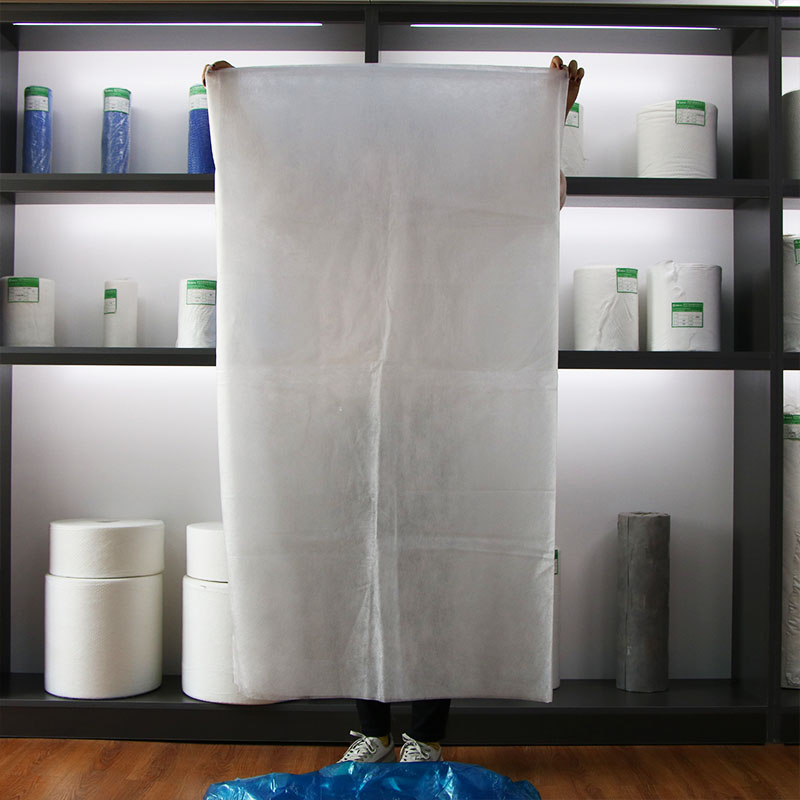The Specifications Of Non-Woven Fabric And Its Applications In Agriculture
Since the beginning of the petrochemical industries non-woven fabrics were produced. Non-woven fabric was used primarily because of their bulk, softness, and easy packaging, which is ideal for covering, as well as filling. Because of the rapid advances in the field of material science the non-woven fabric is now employed in a variety of areas, including commerce, industry as well as civil engineering as well as agricultural engineering. Its presence can be seen throughout the world particularly in its early applications in agriculture. Non-woven fabrics consist of fabric-like substances made of short and longer fibers. They are bonded together through chemical or heating. In general, woven material is stronger and stronger than nonwoven materials. There are numerous kinds of non-woven material and are used in a variety of industries. They have a lower production barrier than woven fabric. Industries and markets are growing evolving, growing and maturing. Look at this pp agricultural nonwoven fabric for more information.
Non-Woven Industry Development It is lighter and more air-conditioned than plastic cloth. It is often used in medical and sanitary products like facial towels filtering, sanitary napkins etc. Then it was developed and applied to engineering. Non-woven fabrics are utilized to shield vegetables from damage caused by cold. While non-woven fabric production is more complicated than plastic film, the raw materials are essentially the same. The materials used comprise PE (polyvinylchloride), EVA, Ethylene Vinyl Acetate copolymer), EVA and PVA (polyvinyl alcohol). The traditional plastic film is made into a thin layer by melting the plastic before inflating it. The film is continuous, and the material can extend to infinity. The film's surface is free of pores. The film is impermeable , and stops any exchange or movement of molecules. The textile industry grew rapidly and artificial chemical fibers made of mentioned materials became well-known. But , in essence the chemical fibers are still woven into cloth by traditional warp and weft weaving. Non-woven fabrics are made by combining fibers in the same plane, at different angles in every direction, rather than using traditional warp and weft techniques. In comparison to traditional woven fabrics they have superior material characteristics, and the production process can proceed from raw materials to finished products in one go. This is a superior alternative to traditional weaving that involves drawing fibers. In recent years the use of non-woven fabrics was extensively used in the clothing sector. Since the last few years, thanks to the improvement of material science and the development of production technologies Non-woven fabrics are becoming more diverse and used increasingly widely. Different materials and products produced can be seen everywhere in our life. Due to their lightness and ease of production, non-woven textiles have gained the popularity of farming. Check out this non woven landscape fabric for tips.

Non-Woven Materials for the Agricultural Industries. Non-woven textiles first came into use in Europe to cultivate crops in the year 1978. This was to cool the temperature of carrots to allow early harvesting and to combat tomatoes leaf virus. In the United States non-woven fabrics are utilized for mulching cantaloupes, sweet peppers, tomatoes, root vegetables, carrots as well as radishes, cabbages, lettuce, and various other vegetables. They are used to preserve heat, for early harvesting, as well as insect control. Non-woven materials have the ability to raise soil temperature and retain water well, so they are also used for grass-proof mats. Short fibers are also utilized in the production of water-absorbing blankets. These are applied on nursery beds in order that the roots can completely absorb water. They are also used as the ground medium for the production of turf. They can also be used as planters to guard large trees like fruit trees or garden trees, and retain moisture. Non-woven fabrics are widely used in Taiwan for crop protection. They are also used extensively for environmental control in large greenhouses in order to conserve energy. Canopy curtains and double-layered curtains, and canopy curtains help to reduce heat and radiation loss in the evening. TAVIK fabrics are high-density, non-woven spunbonded TAVIK fabrics that were used in the early days of shading and protecting cauliflower bulbs. It was quickly adopted by farmers because of its thermal conductivity that was low as well as ability to shade. In the following years, it was used to heat preservation and the cultivation of leaf vegetables that was insect-proof. It also served as a shade, heat preservation and cultivation tool for pineapples and fruit trees. Because of Taiwan's unique ecosystem and climate the development of the nonwoven industry has been slow. Taiwan non-woven fabric manufacturers continue to invent non-woven technology that focuses on air permeabilityand water absorption, as well as water repellency of non-woven materials. It is used for preservation and storage of agricultural products. Check out this agriculture non woven fabric for advice.
